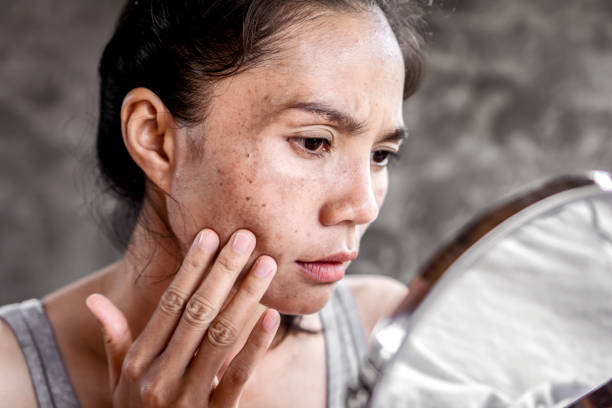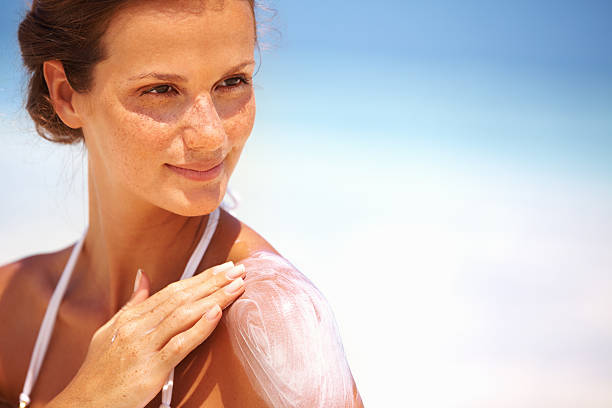When thinking about sun exposure, the warmth and light may seem pleasant, but there’s an unseen component at play that can have profound effects on our skin: ultraviolet (UV) light. This type of light, while invisible to the naked eye, can lead to both subtle and dramatic changes in the skin cells, ranging from sun tans to increased risk of skin cancer. By understanding how UV light interacts with our skin, we can better protect ourselves from its harmful effects and maintain long-term skin health.
The Science of Ultraviolet Light and Skin Interaction

UV light, a form of radiation emitted by the sun, can penetrate our skin and alter its structure and function. While this light is essential for the synthesis of vitamin D, overexposure can be detrimental to our health. The three main types of UV rays – UVA, UVB, and UVC – each have different wavelengths and, as a result, different effects on our skin.
Understanding UVA Rays
UVA rays account for the majority of our UV radiation exposure. These rays are able to penetrate deep into the skin, affecting cells at the basal layer where most skin cancers originate. They play a significant role in skin aging and the development of wrinkles, something known as photoaging. Long-wavelength UVA rays can also cause indirect DNA damage, which can contribute to skin cancers.
The Effects of UVB Rays
UVB rays have a shorter wavelength and are primarily responsible for causing sunburns by damaging the skin’s outermost layers. These rays are more energetic and can directly damage DNA in skin cells, leading to mutations and potentially, skin cancer. Interestingly, UVB rays also play the essential role in the synthesis of vitamin D, necessary for bone health and immune function.
Immediate Effects of UV Exposure on Skin Cells

When the skin is exposed to UV light, the body activates its natural defense mechanisms. Melanocytes, the cells responsible for producing skin pigment, increase their production of melanin in an attempt to shield the skin from damage. This results in the tanning of skin, our body’s way of trying to defend itself against UV radiation.
The immediate effect of excessive UV exposure is often seen as a sunburn, which is essentially an inflammatory response of the skin to injury. The redness, pain, and subsequent peeling are signs of the body repairing damaged cells. However, the impact goes beyond surface-level discomfort; skin cells may suffer alterations that can compromise their health and function.
Long-Term Impact of Ultraviolet Light on Skin Health
UV light can have lasting ramifications on skin health. The accumulative effect of UV exposure over time often leads to chronic conditions such as actinic keratosis, premature aging, and an increased risk for various skin cancers. Daily sun protection can help mitigate these long-term effects.
Photoaging: UV Light and Premature Skin Aging
Chronic sun exposure can lead to photoaged skin, which appears as wrinkles, leathery texture, and loss of elasticity. This is largely due to the degradation of collagen and elastin fibers caused by UVA rays. Prevention is key, and the use of UV protection is critical in maintaining youthful skin. Here are strategies to prevent photoaging:
- Regular application of broad-spectrum sunscreen.
- Wearing sun-protective clothing.
- Limited sun exposure during peak UV hours.
The most severe long-term effect of UV exposure is an increased risk of developing skin cancer. Both UVA and UVB rays contribute to the risk of skin cancer, with UVB rays being more strongly associated with the development of melanoma and other types of skin cancer. Preventive measures must be diligently practiced to reduce one’s risk.
Best Practices for Protecting Your Skin from UV Damage
Protecting your skin from UV damage requires consistent and comprehensive strategies. From sunscreen application to protective clothing, it’s imperative to shield the skin from overexposure. The first line of defense should always be to limit direct sun exposure during hours of peak UV radiation.
Here is a summary of recommended sun protection practices:
- Use a broad-spectrum sunscreen with an SPF of at least 30.
- Apply sunscreen generously and evenly to all exposed skin.
- Wear clothing that covers the skin, such as long-sleeved shirts and pants.
- Choose accessories like wide-brimmed hats and UV-blocking sunglasses.
- Seek shade whenever possible, especially during midday hours.
Myth-Busting: Common Misconceptions about UV Light and Skin
There are many myths surrounding UV light and its effects on the skin. It’s crucial to distinguish fact from fiction to protect your skin effectively. Let’s dispel some common misconceptions and reveal the truths behind them.
| Myth | Reality |
|---|---|
| Tanning beds are safer than the sun. | Tanning beds can expose your skin to even more intense UV radiation than the sun. |
| You don’t need sunscreen on cloudy days. | UV rays can penetrate clouds; sunscreen is necessary even on overcast days. |
| SPF in makeup is enough protection. | Most makeups do not provide sufficient SPF coverage; broad-spectrum sunscreen is advisable. |
| You can’t burn in the shade. | UV rays can reflect off surfaces and still cause skin damage in the shade. |
Conclusion
Ultraviolet light can have significant effects on skin cells, leading to immediate consequences like sunburn and long-term issues such as premature aging and skin cancer. Understanding the science behind UV light and skin interaction is essential for proper protection. It’s crucial to incorporate regular sun-safe practices into your daily routine, not only during the summer months but year-round, to safeguard the health and appearance of your skin. Embracing these habits will ensure a healthier, more resilient complexion for years to come.
FAQs
Q1: Can windows block UV rays and protect my skin indoors?
A1: Regular glass windows can block most UVB rays but allow UVA rays to pass through. For full protection, you might consider UV-blocking window films or coatings.
Q2: Is it safe to use tanning beds if I want to avoid UV damage?
A2: No, tanning beds expose the skin to high levels of UVA and UVB rays, which can lead to skin damage and increase the risk of skin cancer.
Q3: How often should I reapply sunscreen when I’m outside?
A3: You should reapply sunscreen every two hours, or more frequently if swimming or sweating, to maintain protection.
Q4: Can makeup provide enough protection against UV rays?
A4: Makeup alone is usually not sufficient for UV protection. It’s best to use a broad-spectrum sunscreen with at least SPF 30 under makeup.
Q5: Are there specific times of day when UV exposure is highest?
A5: UV exposure is typically highest between 10 a.m. and 4 p.m. It’s advisable to seek shade or wear protective clothing and sunscreen during these hours.
